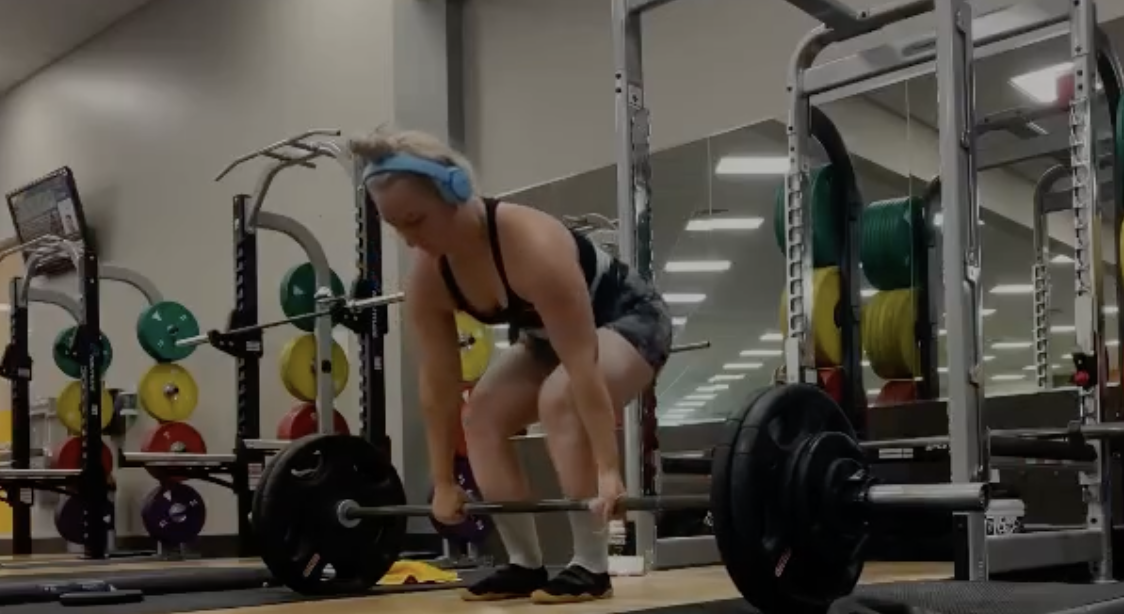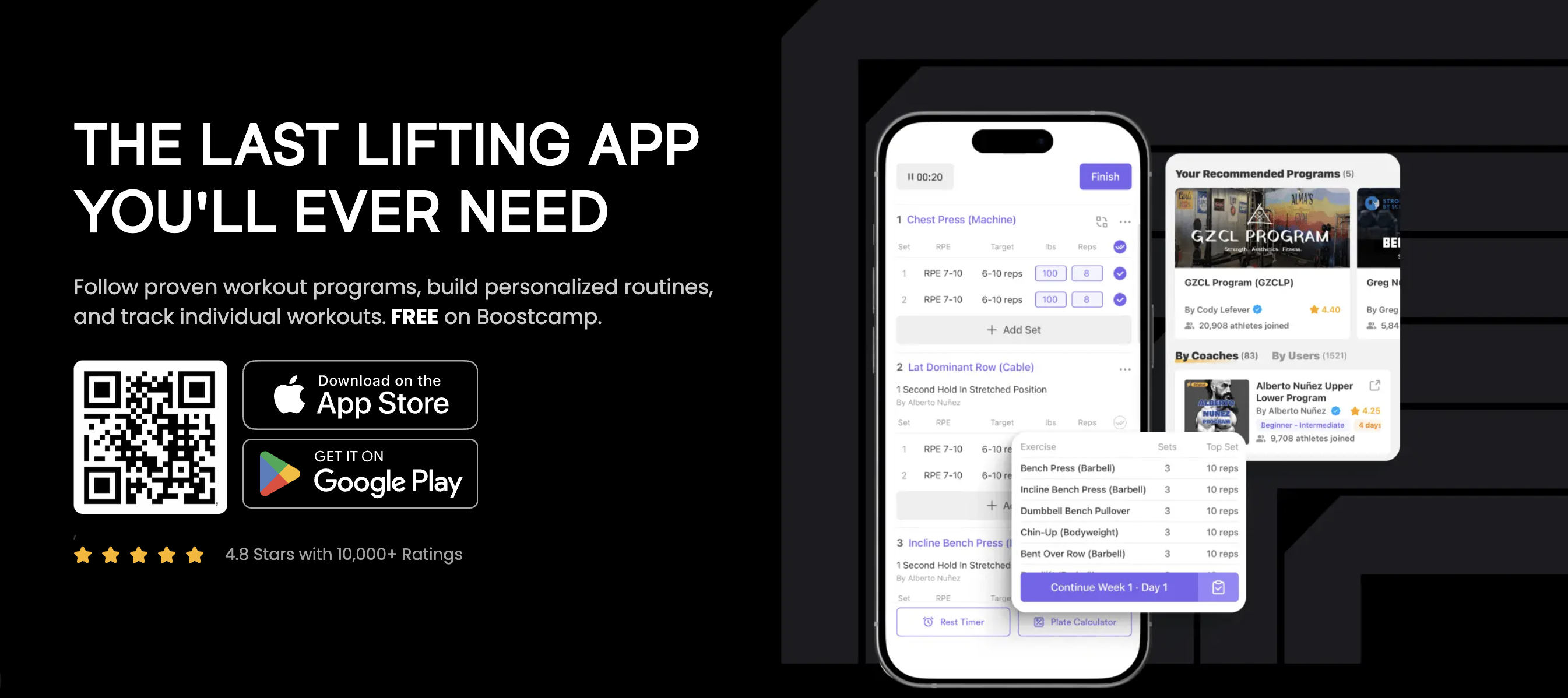The Last Deadlift Guide You'll Ever Need
Written by The Boostcamp Editors
Build your posterior chain
The deadlift is a powerhouse compound movement that builds strength in your back, glutes, hamstrings, and core (the entire posterior chain), making it essential in any training program aimed at building some serious strength, and it also has its place in many different hypertrophy programs as it can be a great mass builder. Regardless of what your intended goals are, performing the deadlift with correct form maximizes the benefits while protecting you from injury. On top of using proper form, following a structured deadlift program, such as those available on the Boostcamp App, can help you achieve consistent strength gains and improve your technique.
Our team has put together a complete guide on how to perform the deadlift properly, and use Boostcamp to optimize your deadlift training.
How to Perform the Deadlift

Let's take a look at how to perform the deadlift properly, to avoid injury and make maximum gains.
1. Setting Up
Approach the Bar: Stand with your feet hip-width apart, with the barbell positioned over your midfoot. This stance keeps your center of gravity stable and in line with the bar.
Grip the Bar: Bend at your hips and knees to reach down, gripping the bar just outside your legs. Use either an overhand or mixed grip (one hand over, one under) for stability.
Foot Positioning: Plant your feet firmly and point your toes forward or slightly outward, whichever feels most stable for you.
2. Body Position
Set Your Hips and Chest: Bend your knees slightly, keeping your hips back and chest lifted. Your hips should be higher than your knees but lower than your shoulders.
Brace Your Core: Tighten your abs as if you’re preparing for impact, and engage your lats by pulling your shoulder blades down and back. Wearing a lifting belt can also help with this, as it forces you to brace your core.
Neutral Spine: Keep your back straight with a natural arch in your lower back, and avoid rounding or overarching. Your head should stay in line with your spine, looking slightly ahead.
3. Lifting the Bar
Drive Through the Heels: Push your feet into the ground and drive up, extending your knees and hips simultaneously. Focus on pushing the ground away from you rather than pulling the bar up.
Keep the Bar Close: As you lift, the bar should stay close to your legs, nearly grazing your shins, and move in a straight vertical line.
Maintain Alignment: Keep your chest up and shoulders pulled back while extending through the knees and hips until you reach full standing position.
4. Locking Out
Finish the Lift: Stand tall with your chest up, shoulders back, and glutes engaged. Avoid leaning back at the top—simply stand fully upright with your body in alignment.
Hold Momentarily: Hold for a brief moment to ensure control, then prepare to lower the bar safely.
5. Lowering the Bar
Hinge at the Hips: Begin by pushing your hips back while maintaining a slight bend in your knees. Keep the bar close to your legs as it descends.
Controlled Descent: Lower the bar to the floor by hinging at the hips and bending your knees when the bar passes them. Avoid dropping the bar—keep control throughout the descent.
Where to Find Deadlift Programs
Boostcamp is an ideal resource for deadlift training, offering over 50 free programs designed to build strength, refine technique, and progressively overload your lifts. Here’s how Boostcamp can help optimize your deadlift:
Monitor Your Progress: Boostcamp’s tracking features allow you to log your deadlift weight, sets, and reps, making it easy to track and see your progress over time and set realistic goals.
Learn Accessory Exercises: Many deadlift programs include accessory movements, like Romanian deadlifts or rack pulls, that can improve weak points and enhance control in your lift.
Develop Consistency: Boostcamp programs come with structured routines that build consistency and help you stay motivated.
Access Expert Knowledge: Each Boostcamp program is crafted by experienced trainers and coaches, so you can trust that your training is backed by proven methods and scientific principles.
More Tips for Deadlift Success
Focus on Form First: Prioritize good form over heavier weights to avoid injury.
Warm Up Thoroughly: Properly warm up with lighter weights to prime your muscles and joints for heavy lifting.
Use a Mixed Grip as Needed: A mixed grip can prevent the bar from slipping, especially during heavy lifts, but alternate hands to prevent imbalances.
Wear Proper Footwear: Choose flat-soled shoes or go barefoot to keep your base stable and prevent shifting weight.
Increase Gradually: Start with manageable weights, then gradually increase as your form and strength improve.
Deadlift Guide Wrap Up
By following these steps and incorporating a Boostcamp program into your training, you’ll progress steadily in your deadlift while keeping your body safe and your form solid. Happy lifting!
Be sure to also follow Boostcamp on Instagramand subscribe on YouTube!


